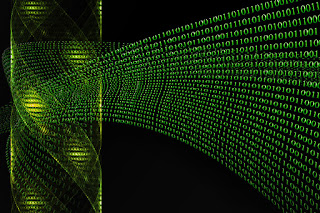 |
| Coding for life Zoonar GmbH/Alamy Stock |
Topics: Biology, Bioengineering, Computer Science
I'm only going to comment with one Caveat Emptor: anything that can be hacked, can be weaponized with the right (i.e. "wrong") motivation and twisted imagination.
Tinkering with life just got easier. A tool that lets you design DNA circuits using a simple symbolic language makes programming living cells as straightforward as writing code for computers.
The tool uses an existing language called Verilog, which is used by chip designers to design electronic circuits. The idea is to make programming cells more like programming a computer. “We take the same approach as for designing an electronic chip,” says Chris Voigt of Massachusetts Institute of Technology. “Every step in the process is the same – it’s just that instead of mapping the circuit to silicon, it’s mapped to DNA.”
Synthetic biology aims to make it possible to treat cells as machines that can be engineered and programmed. By altering a microbe’s native DNA, it can be made to perform a specific task, such as producing a drug or changing colour to detect a virus in blood. Off-the-shelf genetic parts that can be swapped in and out make this easier, but it is still a painstaking process.
That’s where Verilog comes in. Verilog is a symbolic language that lets you specify the function of an electronic circuit in shorthand – without having to worry about the underlying hardware – and then convert it into a detailed design automatically. Voigt’s team realised they could do the same with DNA circuits.
Their system, called Cello, takes a Verilog design and converts it into a DNA wiring diagram. This is fed to a machine that generates a strand of DNA that encodes the specified function. The DNA can then be inserted into a microbe.
New Scientist: Bio coding language makes it easier to hack living cells, Andy Coghlan
Comments